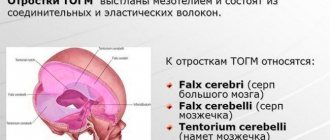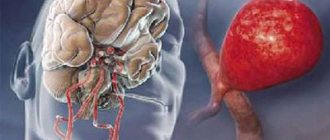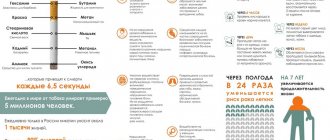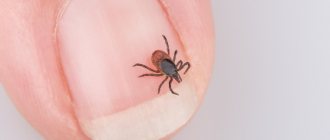Tick-borne encephalitis
Encephalitis
Tick bite
Vomit
6138 01 February
IMPORTANT!
The information in this section cannot be used for self-diagnosis and self-treatment.
In case of pain or other exacerbation of the disease, diagnostic tests should be prescribed only by the attending physician. To make a diagnosis and properly prescribe treatment, you should contact your doctor. Tick-borne encephalitis: causes, symptoms, diagnosis and treatment methods.
Description
Tick-borne encephalitis is a dangerous viral infection that occurs in persistent natural foci and is manifested by high fever, intoxication and damage to the nervous system.
Causes of tick-borne encephalitis
The cause of the disease is an RNA-containing tick-borne encephalitis virus, which belongs to the genus of flavoviruses. Based on the composition of the genetic material and location of distribution, the Far Eastern, Ural-Siberian and Western subtypes are distinguished.
The virus is carried by ixodid ticks, which are also its main reservoir.
Thus, the virus is found where ixodid ticks live, the maximum increase in incidence is observed in May-June, and a second, less pronounced increase is recorded in late summer and early autumn, which is associated with the activity of ticks.
The virus cannot be transmitted from a person infected with tick-borne encephalitis to a healthy person.
The tick-borne encephalitis virus enters the human body in the first minutes of a tick bite or, which happens much less frequently, with the milk of an infected goat, or even less often, a cow. The virus initially multiplies and accumulates in the cells of the immune system, then enters the bloodstream and enters the lymph nodes, liver, spleen and other organs. There it multiplies and attacks the nerve cells of the cervical spinal cord, cerebellum, meninges, remaining there for a long time and penetrating deeper into the brain tissue.
Classification of the disease
The disease can occur in acute
or
chronic
form.
Non-focal acute forms are distinguished
, in the clinical picture of which it is impossible to identify a specific damaged structure of the nervous system, and
focal acute forms
with symptoms indicating the localization of damage to the nervous system.
The severity of the condition with tick-borne encephalitis can be mild , moderate and severe
.
Symptoms of tick-borne encephalitis
The incubation period (from the moment of infection to the first clinical manifestations) averages 7–12 days, but can vary from 1 to 30 days. Rarely during this period, precursors of the disease occur - general malaise, weakness in the muscles of the limbs and neck, numbness of the facial skin, headache, insomnia, nausea.
The disease begins acutely: with an increase in body temperature to 38–40°C, symptoms of intoxication (severe weakness, fatigue, sleep disturbances), as well as symptoms of irritation of the membranes of the brain (nausea, vomiting, severe headache, inability to press the chin to the chest ).
There is lethargy, confusion, redness of the face, neck, and upper half of the body. The patient may feel pain in the muscles of the whole body, most severely where movement disturbances will subsequently be observed; There may be numbness in areas of the skin or a sensation of crawling, burning, etc.
As the disease develops, the main symptoms appear, which determine its form. Most often, tick-borne encephalitis occurs according to the following clinical variants:
- in the form of fever
, lasting 3-5 days with symptoms of general intoxication, but without signs of damage to the nervous system. The outcome is a rapid recovery; - in the form of damage to the membranes of the brain
(most common in adults), which is manifested by unbearable headache, dizziness, nausea and vomiting that does not bring relief, photophobia; lethargy and lethargy appear. Body temperature is elevated, fever lasts 7–14 days. The prognosis is favorable; - in the form of damage to the membranes and substance of the brain
, when the symptoms of irritation of the meninges are accompanied by disturbances in movements in the limbs, including paralysis, visual impairment, hearing, speech, difficulty swallowing, etc. Sometimes convulsive seizures occur. The patient is poorly oriented in place and time, delusions and hallucinations are often observed. Recovery takes a long time, and movement disorders often remain for life. This is a severe form of tick-borne encephalitis, so death cannot be ruled out; - in the form of damage to the spinal cord
with the development of movement disorders (paresis and paralysis) in the muscles of the neck and limbs; - in the form of damage to nerve roots
and fibers with the development of disturbances in sensitivity and movement in the limbs.
Tick-borne encephalitis with a two-wave course of fever
is distinguished separately . The first rise in temperature is relatively mild, accompanied by symptoms of intoxication and irritation of the meninges, and the second (after a two-week break) with the development of a full clinical picture with signs of damage to the nervous system. Despite this, the prognosis is favorable, although transition to the chronic stage is possible.
Tick-borne encephalitis in children most often occurs in the form of fever or with signs of damage to the membranes of the brain.
Immunity to the virus after tick-borne encephalitis is lifelong.
Diagnosis of tick-borne encephalitis
To diagnose tick-borne encephalitis, it is necessary to confirm the fact of tick bite and the place where it occurred (find out whether the area is endemic for tick-borne encephalitis), clarify whether the patient has been vaccinated and whether immunoglobulin has been administered to him.
The doctor carefully examines the patient and conducts a complete neurological examination. It is important to exclude the possibility of other diseases, both infectious and non-infectious, accompanied by similar symptoms.
Laboratory diagnosis of tick-borne encephalitis includes determining the presence and increase in dynamics of the titer of IgM class antibodies and IgG class antibodies in the blood to the tick-borne encephalitis virus.
Symptoms
Symptoms of encephalitis include:
- headache;
- vomit;
- nausea;
- aches and pain in the joints;
- high body temperature (above 38 degrees Celsius);
- confusion;
- drowsiness;
- disorientation;
- convulsions;
- changes in personality behavior.
Not in all cases, but still, photophobia, loss of vision, neck stiffness, involuntary movements of the head, limbs, body, and insemination of body parts may also be noted. Sometimes you can experience anxiety, delusions, paranoia, and hallucinations.
Initially, the patient may seem like just a person who has the flu. But a change in his mental background already indicates that it is worth sounding the alarm and urgently calling an ambulance.
Are you experiencing symptoms of encephalitis?
Only a doctor can accurately diagnose the disease. Don't delay your consultation - call
What should I do if bitten by a tick?
Passive prophylaxis for persons who have been bitten by ticks infected with encephalitis consists of immediate administration of human immunoglobulin against tick-borne encephalitis. The most effective administration of this drug is in the first 96 hours of the disease, with the necessary repetitions according to a three-fold scheme.
Procedure for dealing with a tick bite
- Carefully remove the tick from the bite site using thread, tweezers, a lasso handle, or other special tick removal devices. You need to pull it out with your head so that the wound does not fester.
- If the tick's head comes off and remains in the wound, remove it with a needle previously wiped with alcohol (like a splinter).
- Place the tick in a glass jar, plastic bottle or other suitable container with a lid and take it for analysis to the nearest sanitary and epidemiological station laboratory.
- Be sure to consult a doctor as soon as possible!
- 10 days after the bite, donate blood for encephalitis and borreliosis
- After another 2-3 weeks, to confirm the diagnosis and assess your body’s immunity, take tests for antibodies to tick-borne encephalitis and borreliosis viruses.
Vaccination is the most effective medical intervention ever invented by man.
Used materials
- https://www.who.int/immunization/diseases/tick_encephalitis/en/ - about the prevalence of tick-borne encephalitis, about vaccination
- https://www.who.int/ith/diseases/tbe/en/ - epidemiology of tick-borne encephalitis.
- J. A. Rosendahl. Vector control: methods for individuals and communities. Catalog of WHO publications. Geneva: “Medicine”, 1998. - 438 p.
- entomologs.ru - genetic diversity of tick-borne encephalitis virus.
- Golubovskaya O. A. Infectious diseases. - M.: VSV "Medicine", 2012. - 728 p. + 12 s. color. on
- Vozianova Zh. I. Infectious and parasitic diseases: In 3 volumes - K.: Health, 2001. - T. 2. - 696 p.
Author: Anastasia Lishnevskaya, infectious disease doctor Source: MMK Formed
Brief information
Viral encephalitis is a pathological deformation of the components of the main organ of the central nervous system of viral origin. If cerebral surfaces are involved in the dysfunction, then this phenomenon is called meningoencephalitis, and if the deviation progresses to the spinal cord, it is called encephalomyelitis. In addition, there are two forms of the disease - primary (arising due to the entry of a viral agent into the cerebral structures) and secondary (caused by an underlying illness, such as influenza, rubella, etc.), as well as after vaccination depending on the individual sensitivity of the patient.
According to average statistical data, the prevalence of the described disease differs significantly depending on the country’s climate and geographical indicators. It is found in Asian areas, America, Europe, etc. Taking into account the features of the pathological process, the complexity of studying the body and the classification of the pathogen, there is a high risk of developing serious complications. Currently, inflammation of this type still continues to be a rather relevant and troubling issue among practicing neurologists.
Possible complications
In some cases, if treatment was started on time, the person recovers and does not suffer any complications after suffering from encephalitis. If the patient was delivered in serious or moderate condition, then there is a high risk of acquiring:
- aphasia (problems with the speech apparatus);
- memory problems (the most common complication);
- difficulty concentrating;
- epilepsy;
- instability of mood and emotional background;
- problems with physical activity;
- personal and behavioral changes.
FAQ
Who is most at risk for encephalitis?
Encephalitis is a rare disease, but it can manifest itself in representatives of both sexes. According to statistics, it most often affects people with weakened immune systems.
Can the vaccine cause encephalitis?
There really are such cases. But the risk of getting sick from what you are vaccinated against is much higher than the risk of getting a complication such as encephalitis. Therefore, it is unreasonable to refuse vaccination.
Diagnostic options
Since such a disease lacks a specific clinical picture and is very similar to other central nervous system disorders, testing for this phenomenon becomes a rather difficult process. All stages are monitored by a specialist in the field of neurology. It is he who is obliged to compare anamnestic and epidemiological indications, features of symptoms and information obtained after additional examination techniques. The most common diagnostic procedures:
EEG.- Echo-encephalographic test to determine liquor hypertension.
- Ophthalmoscopic examination of optic nerve objects.
- Lumbar puncture.
- Cerebral fluid analysis is performed using a CT scan and an MRI scan.
- Serological techniques.
- PCR assessment.











